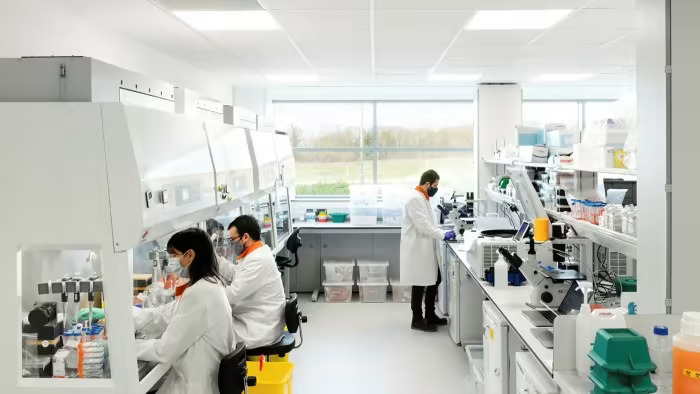The renowned university cities of Oxford and Cambridge, long hailed as hubs of innovation and excellence in the life sciences, are facing a pressing challenge: a shortage of laboratory space that threatens to stifle the region’s burgeoning biotech sector. As demand for lab facilities surges amid a boom in life science research and commercialization, stakeholders must address this critical issue to sustain the momentum of innovation and maintain the cities’ competitiveness on the global stage. Here’s an in-depth look at the implications of the lab space shortage:
1. Bottleneck to Growth: The scarcity of laboratory space poses a significant bottleneck to the growth of the life science sector in Oxford and Cambridge. Without adequate facilities, research institutions, startups, and biotech companies face constraints in expanding their operations, conducting experiments, and developing new therapies and technologies.
2. Competitive Disadvantage: The shortage of lab space places Oxford and Cambridge at a competitive disadvantage compared to other global biotech clusters. Potential investors and collaborators may look elsewhere for opportunities if the cities cannot offer sufficient infrastructure and resources to support research and development activities.
3. Risk to Talent Pipeline: A lack of available lab space may deter talented researchers, entrepreneurs, and students from pursuing opportunities in the region. Without access to state-of-the-art facilities, aspiring scientists may choose to relocate to areas with better-equipped laboratories, jeopardizing the talent pipeline essential for driving innovation and economic growth.
4. Innovation Ecosystem Under Strain: The vitality of Oxford and Cambridge’s innovation ecosystems hinges on the availability of collaborative spaces where academia, industry, and government can intersect and exchange ideas. The lab space shortage disrupts this dynamic by impeding collaboration and hindering the translation of academic research into commercial applications.
5. Urgent Need for Investment: Addressing the lab space shortage requires a concerted effort from public and private stakeholders to invest in infrastructure and facilities. Governments, universities, and industry partners must prioritize funding for the construction of new laboratories and the renovation of existing spaces to meet the growing demand from the life science community.
6. Sustainable Solutions: In addition to expanding physical infrastructure, stakeholders should explore innovative solutions to optimize the use of existing lab space and maximize efficiency. This may involve implementing shared-use agreements, adopting flexible working arrangements, and embracing digital technologies to enhance collaboration and resource utilization.
Sponsored
FACTS Transcripts
Apply for a University document anywhere
https://www.factstranscript.com
Quick Transcripts for popular Universities, check your University name now and get started. We help you to get your transcript application online which is accepted for use of IRCC.
No DD, NO Paperwork. 100% Authentic, Reliable.
FACTS Transcripts Charges · Reviews · Assam Universities · Home · Know your University









